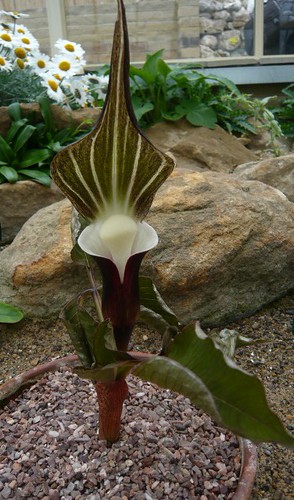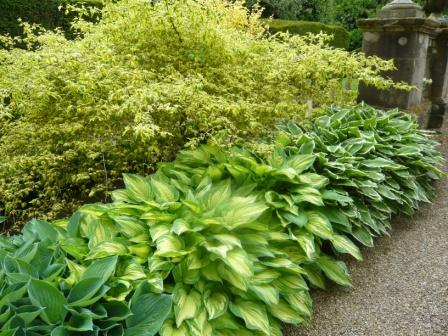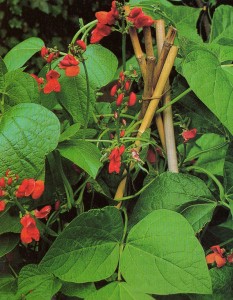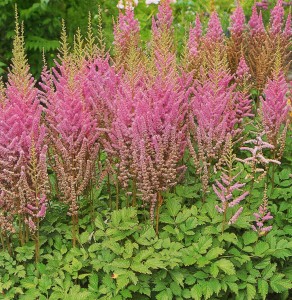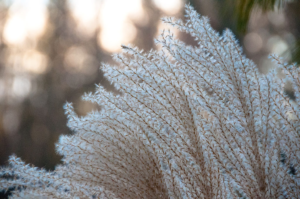Growing and Recognising Arisaema sikokianum
Arisaema sikokianum is a herbaceous perennial plant with vertically patterned flowers.
Characteristics
- In an alpine house or garden it flowers in springtime upto 18″ tall.
- It can be planted with shade-loving hostas and Bleeding hearts.
- They need neutral to acid soil in a moist, well-draining, protected location in dappled shade to flourish.
- Seeds have a low rate of germination, and take a very long while to get going. Harvested in December & store at room temperature for one month, then planted in shady situations.
Other names for Arisaema sikokianum include Shikoku cobra lily, Gaudy Jack or Japanese Jack-in-the-Pulpit.
Arisaema sikokianum is one of 150 species and an unusual woodland plant noted for its unmistakable smoky-purple base, white cup and large hood with purple, green and white stripes.
There is a specialist international society for Aroids or Arum family plants with Arisaema links.
